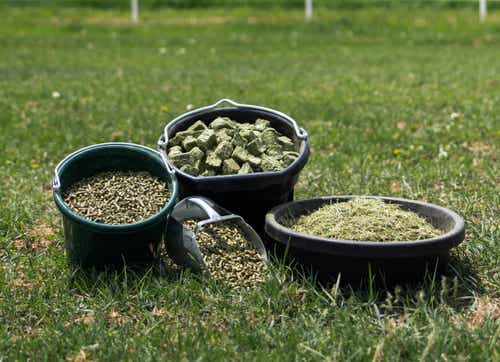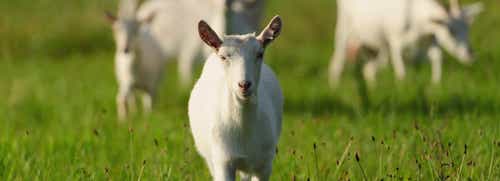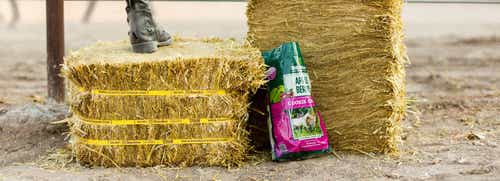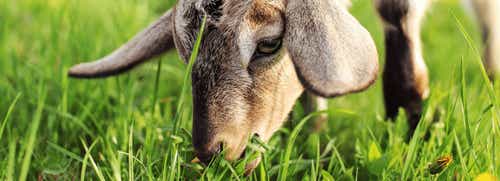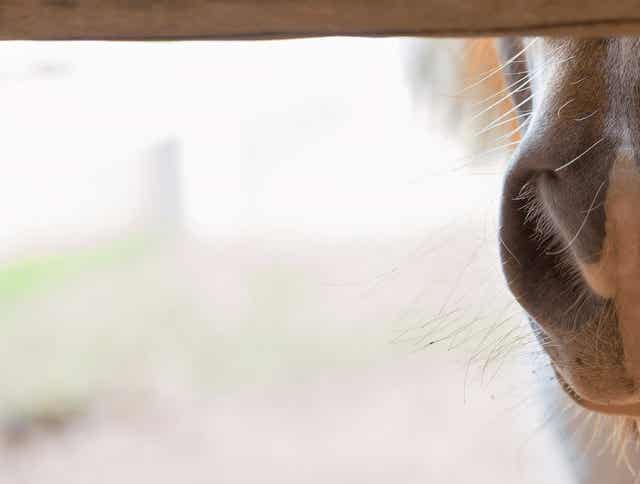
What Can I Do If I’m in Short Supply of Hay or Pasture?
Every year, there is inevitability a natural disaster threatening the most important component to raising livestock (besides the need for water, which can also be heavily affected by disasters). Between flooding from hurricanes, wildfires and drought, it’s been a challenge for those caring for animals to just meet their basic survival needs. Whether it be a natural disaster, traveling for shows, running out of hay or just wanting to provide a consistent source of quality forage for your animals, finding a means outside of traditional hay is a must to be familiar with!
Why Forage?
Regardless of the situation, forage is essential to maintain proper function of the horse’s digestive system. Our Standlee equine nutritionists recommend feeding horses between 1.5%-2.5% of their body weight (BW) in forage. If you’re looking at a 1,000lb horse, that would be between 15-30lbs of hay a day, depending on their life stage and activity level. Let’s look at an example of how much hay is needed over a winter season:
- 2% BW for 1,000lb horse = 20lb/day
- ~ 5 months winter (location dependent) = 150 days
- 20lbs x 150 days = 3,000lbs or 1.5 tons of hay
This equates to 75 – 40lb bales of local hay. Storage can be limiting, hay can be inconsistent, so what do you do?
What Hay Alternatives are Available?
There are many different forage formats available for feeding as a normal diet or when your short on hay supply.
- Conventional baled forage
- Compressed bales
- Compressed Grab and Go® bales
- Forage cubes
- Forage pellets
- Chopped forage
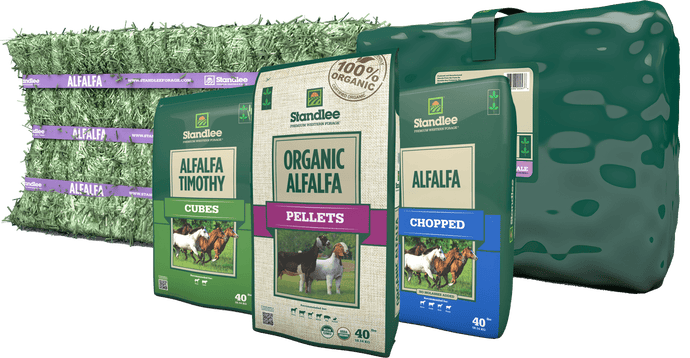
How Do I Feed It?

Pellets and cubes are recommended to be soaked between about 15 minutes to 2 hours at a 2:1 water to forage pellet or cube ratio. Avoid soaking for long periods of time in the hot summer months to mitigate mold growth, and likewise in the freezing winter months, otherwise your horse will have to pick their way through a hardened ice block.
5 Common Questions About Feeding Alternative Hay Sources
- 1. Question – Won’t cubes and pellets cause my horse to choke?
- Answer – This is a common myth that comes up time and time again. Choking has nothing to do with the format of the forage and everything to do with feeding behavior. Horses are often meal fed, which creates uncertainty for the horse of when they’ll get their next meal. Regardless of the form, they might inhale it, which causes choke. It is important to feed at ground level, allowing the horse to extend his neck in his natural grazing position. Soaking cubes or pellets two parts water to one part pellet/cube for 15 minutes to 2 hours can help slow the rate of consumption, but also help with hydration.
- 2. Question – Doesn’t my horse need long stem forage for proper digestion?
- Answer – No, horses do not need long stem forage in the diet for proper digestion. However, long stem forage increases chewing time, which increases saliva production, buffering the stomach from acid that can cause ulcers. Horses that do not consume any long stem forage can also develop unfavorable behaviors including cribbing, weaving, manure-eating, and mane and tail chewing.
- 3. Question – Does the nutritional analysis of the forage change when processed into pellets or cubes?
- Answer – We don’t use excessive heat and steam to manufacture our products, which is not enough to "cook" the product or cause a loss of nutrients.
- 4. Question – Why would I feed pellets or cubes over traditional long stem forage?
- Answer – For horses with dental issues, feeding soaked pellets or cubes are ideal as they are softened and require less chewing and grinding. This will allow them to consume needed nutrients to meet their maintenance needs. Also, while long-stem forage is great for saliva production, which helps buffer the stomach from ulcers, it is better to feed pellets during the treatment of hindgut ulcers.
- 5. Question – How do I know the correct amount of cubes or pellets to feed?
- Answer – Horses should be fed by weight and not by volume at the rate of about 1.5% to 2.5% of their body weight per day in forages. These weights should be measured dry, as when you add water you are only adding water weight to the product. If you feed your 1,000lb horse 2% of their body weight, or 20lbs in long stem forage, an addition of 10lbs of pellets to the diet would in turn leave about 10lbs of long stem forage for consumption. If you are upgrading from poorer hay to a higher quality forage, nutrient utilization will be better and can decrease the amount of grain or supplements needed in the diet.
Watch the Webinar
Still have questions on hay alternatives? One of our Standlee equine nutritionists, Dr. Cubitt, goes into further detail about the following points in a webinar recording titled, "When Quality Hay Is In Short Supply, What Can I Feed My Horse":
- How It’s Made: Pellets and Cubes
- Pros and Cons of Bagged Forages
- When to Add to the Diet – Having a Back-Up Plan When Disaster Strikes (i.e. Fire, Natural Disaster, etc.)
- How to Confidently Add Hay Alternatives to Your Horse’s Diet



